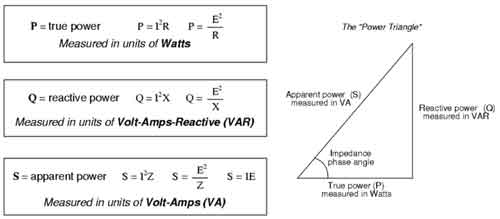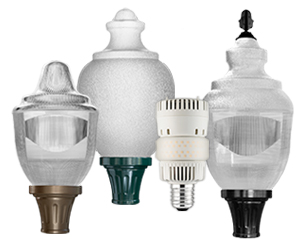OSHA Lockout Tagout Training - Electrical Safety Course
By R.W. Hurst, Editor
NFPA 70e Training
Our customized live online or in‑person group training can be delivered to your staff at your location.

- Live Online
- 6 hours Instructor-led
- Group Training Available
Download Our NFPA 70E Fact Sheet – 2024 Electrical Safety Edition

- Understand how NFPA 70E works with NEC and NFPA 70B standards
- Clarify the shared responsibility between employers and employees
- Learn how NFPA 70E supports OSHA compliance
OSHA Lockout Tagout Training delivers LOTO compliance, hazardous energy control, OSHA 1910.147 guidance, energy control procedures, lock and tag devices, verification steps, and documentation to safeguard maintenance teams and contractors during machine servicing.
What Is OSHA Lockout Tagout Training?
It trains workers to control hazardous energy with OSHA 1910.147 LOTO procedures, devices, verification, and documentation.
✅ Covers energy control program, roles, and authorized worker duties
✅ Demonstrates lock, tag, and verification before servicing
✅ Includes periodic inspections and device application best practices
OSHA Lockout Tagout Training is a critical safety requirement designed to prevent workplace injuries caused by the unexpected release of hazardous energy during equipment servicing. Mandated under OSHA standard 29 CFR 1910.147, this training educates workers on how to recognize energy sources, apply lockout/tagout devices, and follow strict energy control procedures to protect themselves and others. A properly trained workforce is essential for compliance, safety, and operational reliability. For a detailed overview of regulatory expectations, consult the OSHA lockout/tagout standard to align your program with current rules.
Visit Our Lockout Tagout Training Course
Proper training in lockout tagout LOTO procedures is essential for ensuring worker safety during the servicing and maintenance of machines or equipment. The Occupational Safety and Health Administration enforces the LOTO standard, officially known as the standard for the control of hazardous energy (29 CFR 1910.147), which outlines the necessary steps to prevent unexpected startup or energy release. Through comprehensive hazardous energy lockout tagout training, employees learn how to identify energy sources, isolate them effectively, and apply the appropriate devices and procedures. This not only ensures compliance with OSHA regulations but also significantly reduces the risk of injury in the workplace.
Test Your Knowledge About Arc Flash!
Think you know Arc Flash? Take our quick, interactive quiz and test your knowledge in minutes.
- Instantly see your results and score
- Identify strengths and areas for improvement
- Challenge yourself on real-world electrical topics
Understanding OSHA Lockout Tagout Training
LOTO training helps workers identify hazardous energy sources and isolate equipment safely before maintenance or service. OSHA categorizes employees into three groups requiring training:
-
Authorized employees apply lockout/tagout devices and perform maintenance.
-
Affected employees operate equipment that may be shut down during service.
-
Other employees work nearby and require awareness training.
This instruction covers energy types—including electrical, hydraulic, pneumatic, and thermal—and teaches the procedures to shut down, isolate, and verify that equipment is properly de-energized. It also emphasizes using isolation devices and maintaining a secure environment. If you're new to the concept, this primer on what lockout tagout is clarifies terminology and core principles.
OSHA Training Requirements Under 29 CFR 1910.147(c)(7)
According to OSHA, employers must train all employees who may be exposed to hazardous energy. Key requirements include:
A concise summary of OSHA lockout tagout requirements can help define scope and responsibilities.
-
Providing initial training upon assignment
-
Ensuring workers demonstrate understanding of LOTO procedures
-
Offering retraining when procedures or equipment change, or when audits reveal deficiencies
-
Maintaining documentation of all training sessions
How Often Should Training Be Conducted?
Training is not a one-time event. Initial instruction is required for all new assignments involving hazardous energy. Additional training is necessary when procedures change or inspections reveal improper implementation. At a minimum:
To plan curricula and refreshers, explore our guide to lockout tagout training for scheduling tips and content depth.
-
Authorized employees should receive annual refresher training
-
Retraining is also required when procedural errors are observed
Topics Covered in Lockout Tagout Training
An effective training program covers several key areas:
-
The purpose of energy control programs
-
Identification of various hazardous energy types
-
Hazards of uncontrolled energy release
-
Use and application of lockout/tagout devices
-
Shutdown, isolation, verification, and re-energization procedures
-
Releasing stored energy (e.g., hydraulic pressure or capacitors)
These topics ensure workers are prepared to safely perform servicing and maintenance tasks. For step-by-step guidance, review essential lockout tagout procedures that reinforce consistency in the field.
The Seven Steps of Lockout Tagout
LOTO procedures follow a structured sequence:
-
Preparation – Identify the equipment and its energy sources; notify affected employees.
-
Shutdown – Use standard methods to turn off equipment.
-
Isolation – Physically disconnect all energy sources.
-
Lockout/Tagout – Apply devices to prevent accidental activation.
-
Stored Energy Release – Safely discharge any residual energy.
-
Verification – Confirm zero-energy state before starting work.
-
Restoration – After service, remove devices and restore power in a controlled manner.
Why Lockout Tagout Training Matters
Inadequate control of hazardous energy remains a leading cause of injury in industrial settings. Effective LOTO training:
-
Reduces risk of accidental startup or energy discharge
-
Reinforces procedural consistency and awareness
-
Promotes OSHA compliance and audit readiness
Well-trained teams not only work more safely, but also contribute to higher productivity and fewer violations.
Recognizing Unexpected Energization Hazards
Residual energy from sources like capacitors, springs, hydraulic accumulators, or backup batteries can create serious hazards. Workers must be trained to:
-
Identify these hidden sources
-
Follow correct procedures to isolate and dissipate stored energy
Proper recognition and control of these risks are essential before starting service. You can strengthen controls by adopting lockout tagout best practices that address stored energy and verification steps.
Servicing and Maintenance Requirements
LOTO procedures are mandatory whenever servicing or maintenance exposes employees to hazardous energy. This includes tasks like adjusting, cleaning, inspecting, or repairing machinery. All workers performing or affected by this work must:
-
Follow energy control procedures precisely
-
Use correct lockout/tagout devices
-
Verify equipment is fully de-energized before beginning work
Begin Your Lockout Tagout Training Today
A comprehensive lockout tagout training program is key to maintaining safety and meeting legal responsibilities. Visit our Lockout Tagout Training Course page to begin equipping your workforce with the knowledge and tools they need to manage hazardous energy and prevent workplace injuries. Additional context on lockout tagout will support consistent communication across teams.
Electricity Today T&D Magazine Subscribe for FREE

- Timely insights from industry experts
- Practical solutions T&D engineers
- Free access to every issue
Frequently Asked Questions (FAQ)
What is the purpose of OSHA Lockout Tagout Training?
The purpose is to train employees to control hazardous energy and prevent accidental equipment startup during maintenance or servicing.
Who needs Lockout Tagout training under OSHA regulations?
Authorized, affected, and other employees exposed to hazardous energy sources must receive specific training based on their role.
How often does OSHA require Lockout Tagout training?
Initial training is required at assignment. Retraining is required if procedures change or if audits identify non-compliance—typically at least annually.
Learn More
Explore related topics to build a complete lockout tagout strategy:








